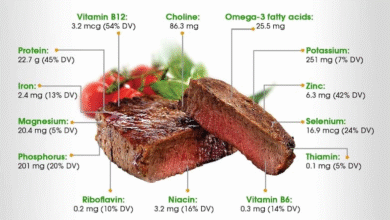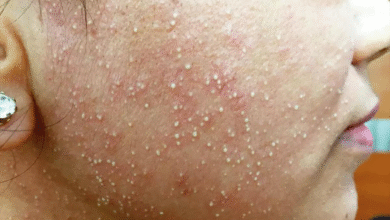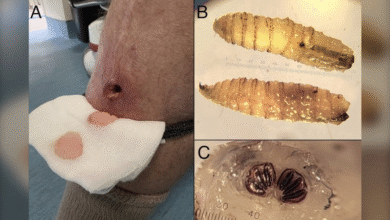Chikungunya Outbreak Raises Global Health Concerns
The recent chikungunya outbreak has emerged as a significant health concern, particularly in Guangdong Province, China, where over 7,000 cases have been reported. This mosquito-borne virus, as noted in the recent CDC chikungunya alert, poses a serious risk, not only to local populations but potentially on a global scale. The symptoms of chikungunya can debilitate individuals, causing high fevers and severe joint pain, which may last for months. As health officials scramble to implement preventive measures against chikungunya, including the use of insecticides and surveillance drones, the urgency to contain this virus intensifies. In light of its rapid spread, understanding the chikungunya virus and its implications has never been more critical.
The ongoing public health crisis related to the chikungunya epidemic highlights the dangers associated with this viral infection transmitted by mosquitoes. Often described as a painful and debilitating illness, chikungunya shares similarities with other mosquito-borne diseases, drawing attention to the need for effective mosquito control strategies and public awareness. Symptoms of this viral infection range from severe joint pain to fever, which can significantly impact the quality of life for those affected. As health organizations worldwide respond to the challenge of chikungunya, they emphasize the importance of preventive measures to reduce transmission. With new cases appearing beyond its origin, this outbreak presents a growing risk that warrants immediate action.
Understanding Chikungunya Virus Transmission
Chikungunya virus, a mosquito-borne virus, causes concern due to how easily it can spread from infected individuals to susceptible populations. When a mosquito, typically of the Aedes species, feeds on a person infected with the chikungunya virus, it can carry the virus in its saliva. Once the mosquito bites another person, it injects the virus, leading to new cases of chikungunya, particularly during outbreaks as seen in Guangdong Province, China. The CDC chikungunya alert highlights this transmission pathway, warning the public about potential risks during the mosquito breeding seasons, particularly in regions with confirmed cases.
Interestingly, the virus does not spread from person to person; thus, community transmission relies primarily on mosquito activity, which makes preventive measures particularly vital. With observed spikes in cases, especially in places like Guangdong, it is essential to educate the public on the behaviors of mosquitoes and the environments conducive to their breeding. This knowledge plays a critical role in controlling current and future outbreaks.
Current Chikungunya Outbreak in China
The recent chikungunya outbreak in China has resulted in over 7,000 confirmed cases, according to reports by health authorities. This alarming figure reflects how rapidly the virus can spread, prompting the CDC to issue heightened alerts. The outbreak is primarily concentrated in the Guangdong Province, emphasizing the necessity for stringent public health interventions. The increasing number of cases indicates a larger systemic issue related to mosquito control and public health readiness, driving home the need for effective management strategies, including surveillance and vaccination.
As outbreaks continue to manifest in various regions, global health organizations are keeping a close eye on the situation in China due to its potential implications. With chikungunya cases reported spreading through Europe and various parts of Asia, the interconnectedness of our globalized world raises concerns that such outbreaks could turn into international health emergencies if not promptly contained. Therefore, it is essential for travelers and residents in affected areas to stay informed on preventive measures against chikungunya.
Recognizing Symptoms of Chikungunya
The symptoms of chikungunya are crucial for early detection and response, especially during an outbreak. Individuals typically experience a sudden high fever and severe joint pain, often beginning three to seven days after being bitten by an infected mosquito. The joint pain associated with chikungunya can be debilitating and may last for weeks or even months, significantly impacting the quality of life for some patients. Other common symptoms include headaches, muscle pain, fatigue, and rash, which may help in differentiating chikungunya from other mosquito-borne illnesses like dengue.
It is critical for individuals, particularly those living in or traveling to areas with ongoing outbreaks, to recognize these symptoms promptly. Early medical consultation can lead to better management of pain and an overall more favorable outcome. Additionally, healthcare providers should be vigilant in diagnosing chikungunya, particularly during peak transmission seasons, as timely intervention can mitigate further spread and assist in community health strategies.
Preventive Measures Against Chikungunya
Preventive measures against chikungunya are vital, especially in combating the spread of this mosquito-borne virus. Individuals are advised to utilize EPA-registered insect repellents, wear long-sleeved clothing, and ensure that living environments are free of stagnant water where mosquitoes breed. Simple actions such as using screens on windows, sleeping under mosquito nets, and applying insect repellent to skin can significantly reduce the risk of infection.
In addition to personal protective measures, public health initiatives are critical in controlling the outbreaks effectively. This includes community education on mosquito control measures, as well as the potential use of vaccines for at-risk populations. The availability of two vaccines in the U.S. suggests an evolving strategy to protect individuals from severe outcomes related to chikungunya, especially among travelers to regions with reported outbreaks. Consulting with healthcare providers regarding vaccination can provide additional layers of protection.
Global Impact of Chikungunya Outbreaks
The broad geographical spread of chikungunya outbreaks underscores its potential global health impact. Major outbreaks have occurred across the Americas, Africa, Asia, and Europe, with significant increases observed since early 2025. With around 240,000 cases reported and a substantial number of deaths, the global health community must be alert and responsive to this emerging threat. The interconnected nature of travel and trade means that outbreaks in one region can quickly affect others, making it imperative to ensure robust international health coordination.
As nations grapple with containing dengue and chikungunya, it becomes critical to share surveillance data and effective prevention strategies globally. Collaborative efforts to control mosquito populations, research on vaccine efficacy, and public awareness campaigns can be significantly enhanced through multinational partnerships. Innovations in technology, such as the use of drones for mosquito surveillance in China, serve as examples of how modern strategies can aid traditional preventive measures.
Role of Healthcare Providers in Managing Chikungunya
Healthcare providers play a pivotal role in managing chikungunya outbreaks by diagnosing infected patients and offering essential recommendations. The uniqueness of chikungunya symptoms necessitates that healthcare professionals remain vigilant in identifying cases, particularly in areas with known outbreaks. Rapid recognition can lead to appropriate care and guidance on symptom management, which is crucial for individuals suffering from pain and other debilitating effects of the disease.
Furthermore, healthcare providers can also contribute to broader public health strategies by educating patients on the importance of preventive measures against chikungunya. By discussing lifestyle changes, recommending vaccinations where applicable, and sharing information about local outbreaks, they can empower individuals to take proactive steps in minimizing their risk of infection. This multifaceted approach can have a profound and lasting impact on controlling chikungunya at both individual and community levels.
Chikungunya Vaccination: A Growing Necessity
Vaccination has emerged as a critical component in the fight against chikungunya virus, especially as outbreaks become more frequent. Two vaccines available in the US illustrate the focus on enhancing immunity among higher-risk populations, such as travelers to endemic regions. The live-attenuated vaccine (IXCHIQ) and the virus-like particle vaccine (VIMKUNYA) offer promising options to help reduce the transmission of chikungunya and protect vulnerable groups.
As health experts analyze the effectiveness and suitability of these vaccines, understanding their benefits can play an essential role in encouraging uptake among at-risk individuals. By communicating the significance of vaccination when traveling to affected areas, healthcare providers can help mitigate severe illness and outbreaks significantly. With innovative vaccine development being a vital aspect of public health responses, ongoing research and education are crucial in reducing the global impact of chikungunya.
Challenges in Controlling Chikungunya Outbreaks
Efforts to control chikungunya outbreaks face numerous challenges that complicate public health responses. One significant hurdle includes the rapid proliferation of mosquitoes, especially in urban areas where stagnant water is abundant. The Malaysian strategy of drones deployed to identify breeding sites demonstrates a proactive approach, yet it also highlights the practical difficulties of ensuring widespread implementation and compliance among communities.
Additionally, skepticism regarding the effectiveness of draconian measures, such as fines for failing to eliminate mosquito habitats, raises questions about the best strategies for mosquito control. Public health officials must strike a balance between rigid containment policies and engaging communities as partners in the effort to curb chikungunya spread. Addressing these challenges through collaboration, education, and innovation is essential to limit the outbreaks more effectively.
Future Directions in Chikungunya Research
In light of the chikungunya outbreaks affecting various regions, future research directions will likely focus on improving understanding of the virus, development of more effective vaccines, and exploration of innovative mosquito control technologies. As seen in past experiences with similar mosquito-borne diseases, ongoing investigations into viral transmission and mutation patterns are crucial for preemptively addressing public health threats posed by chikungunya.
Moreover, research into societal and behavioral factors can guide health campaigns to increase awareness about preventive measures against chikungunya. Utilizing real-time data analytics and modeling will enhance outbreak predictions and responses. Therefore, fostering collaboration among researchers, healthcare professionals, and public health agencies will be paramount in not only tackling current challenges but also preventing future chikungunya outbreaks globally.
Frequently Asked Questions
What is the Chikungunya outbreak and its global impact?
The Chikungunya outbreak refers to the rapid spread of the chikungunya virus, a mosquito-borne virus, particularly noted in regions like Guangdong Province, China. As of 2025, approximately 240,000 cases have been reported worldwide. The U.S. CDC has issued alerts due to concerns about this outbreak affecting international travel and public health.
What are the main symptoms of chikungunya during an outbreak?
During a chikungunya outbreak, common symptoms include high fever, joint pain, headaches, joint swelling, rashes, and muscle pain. Symptoms generally occur 3 to 7 days post mosquito bite and often resolve within a week, though severe joint pain can persist for months.
How can I prevent chikungunya during a chikungunya outbreak?
Preventive measures against chikungunya during an outbreak include using EPA-registered insect repellent, wearing long-sleeved clothing, ensuring that windows are screened, sleeping under mosquito nets, and treating clothing with insecticides. These steps help reduce the risk of mosquito bites and contracting the virus.
What precautions is China taking in response to the chikungunya outbreak?
In response to the chikungunya outbreak, China is enforcing strict measures, including using drones to identify mosquito breeding sites, spraying insecticides, and conducting door-to-door visits to eliminate standing water. These actions aim to control the spread of the chikungunya virus effectively.
Who is at the highest risk during the chikungunya outbreak?
Individuals at the highest risk during a chikungunya outbreak include adults aged 65 and older, newborns, and those with underlying health conditions such as heart disease or diabetes. They face a higher likelihood of experiencing severe symptoms or complications from the chikungunya virus.
Is there a chikungunya vaccine available during the outbreak?
Yes, during the chikungunya outbreak, two vaccines are available in the U.S.: the live-attenuated vaccine (IXCHIQ) and the virus-like particle vaccine (VIMKUNYA). These vaccines are recommended for travelers at higher risk of exposure to the chikungunya virus.
Can chikungunya be spread from person to person during an outbreak?
No, chikungunya is not spread from person to person. It is transmitted solely through the bites of infected mosquitoes. During an outbreak, it is crucial to focus on mosquito control and prevention measures to minimize transmission risks.
What are the CDC’s recommendations regarding the chikungunya outbreak?
The CDC recommends staying informed about chikungunya outbreaks, using protective measures against mosquito bites, and consulting healthcare providers regarding vaccination, especially for higher-risk travelers and travelers to affected areas.
| Key Point | Details |
|---|---|
| Chikungunya Outbreak in China | A significant outbreak in Guangdong Province has led to over 7,000 reported cases. |
| CDC Alert Level | The U.S. CDC has issued a Level 2 alert regarding the outbreak. |
| Global Impact | Approximately 240,000 chikungunya cases and 90 deaths reported globally in 2025. |
| Transmission | Spread by mosquitoes that bite infected individuals and then uninfected ones. |
| Symptoms | High fever, joint pain, headaches, rashes, muscle pain—typically lasting up to a week. |
| High-Risk Groups | Adults over 65, newborns, and those with existing health conditions. |
| Control Strategies in China | Use of drones for surveillance, fines for standing water, and hospital quarantines. |
| Preventive Measures | Use repellents, wear protective clothing, screen windows, and consult for vaccinations. |
Summary
The Chikungunya outbreak poses a serious health threat as it spreads through infected mosquitoes, particularly in regions like China and Europe. With increasing case numbers globally and the possibility of severe symptoms, public health measures are critical in reducing transmission risks. This includes both individual preventive actions and broader control strategies employed by health authorities.




